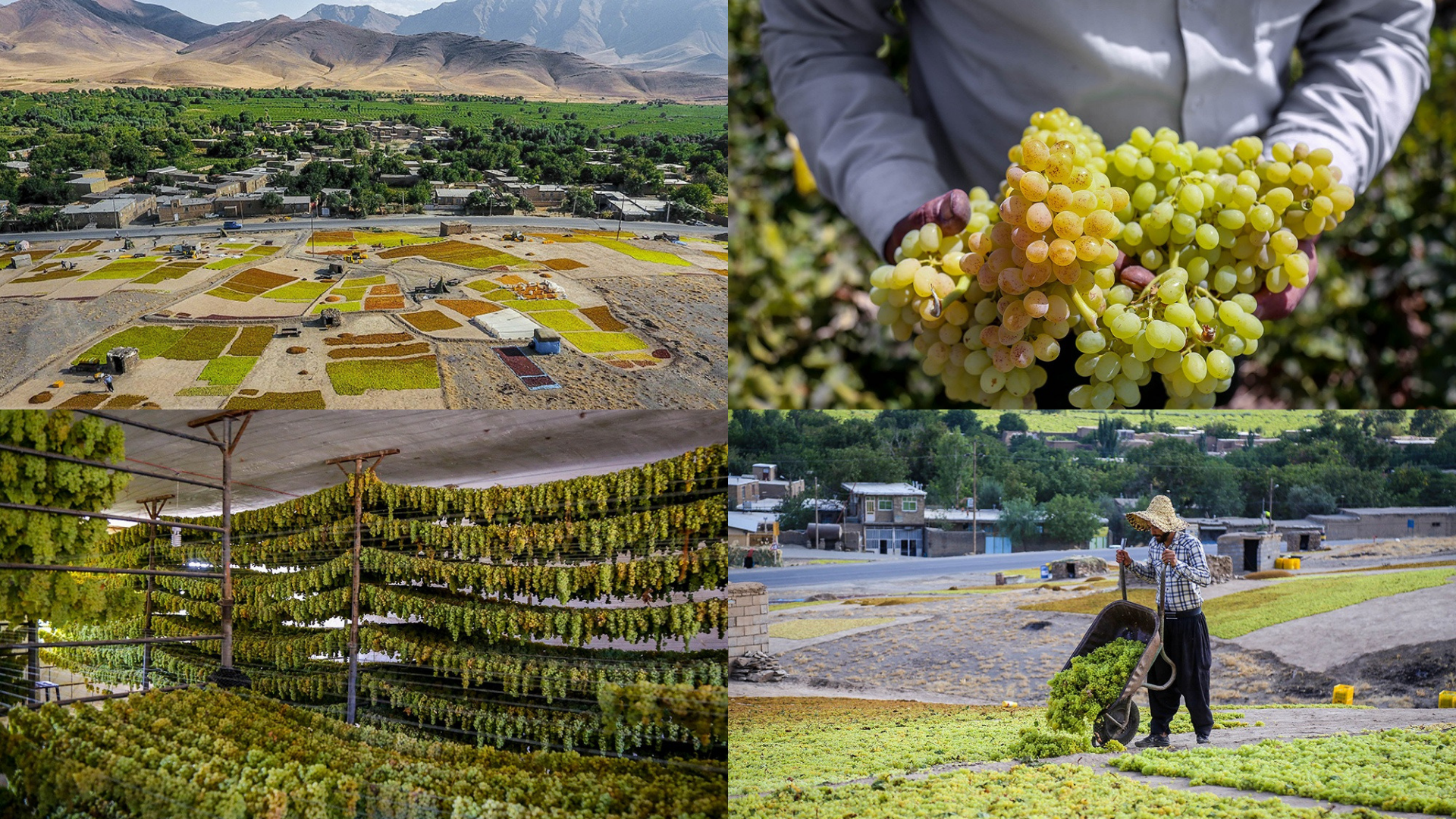The traditional grape cultivation in Malayer County’s Jowzan Valley rural district, Hamedan Province, was formally recognized as a Globally Important Agricultural Heritage System on Friday.
The announcement was made during a meeting in Rome of the GIAHS Scientific Advisory Group affiliated with the Food and Agricultural Organization of United Nations.
“We, as the responsible body in Iran in this respect, sent the proposal for Jowzan Valley grapes to be designated as a GIAHS in early 2017. Around 90% of the grapes produced in Malayer are cultivated in the vineyards of this valley,” Ali Kianirad, the deputy head of Research Department with the Agricultural Planning, Economic and Rural development Research Institute affiliated with the Ministry of Agriculture, told Financial Tribune.
Iran, World’s Third Biggest Raisin Producer, Exporter
According to Davoud Habibi, an official with the Agricultural Ministry’s Horticulture Department, Iran ranks third in both global production and exports of raisins after Turkey and the US.
“We export more raisins than fresh grapes. Grape exports amounted to 4,159 tons worth more than $3.1 million during the seven months to Oct. 22, registering a 1.7% and 22.29% growth in weight and value respectively compared with the similar period of last year. Over the same period, some 44,000 tons of raisins worth more than $59.81 million were exported. The figures show a respective decline of 14% and 34.84% year-on-year," he said.
"Last year, we exported 96,420 tons of raisins worth close to $152.71 million, registering a 28.57% and 45.63% decline in volume and value respectively compared with the year before. The frost, which caused a decline in production as well as fluctuations in foreign currency rates during the period, were the main reasons behind the fall in exports.”
According to Habibi, Iran’s biggest export destination for grapes and raisins is Russia.
Other main customers are some member countries of the European Union, Iraq, Afghanistan and the Persian Gulf littoral countries.
Habibi said that in the last Iranian year (March 2017-18), more than 3.19 million tons of grapes were produced from 305,000 hectares of vineyards across the country.
“The production figure shows a 16% fall compared with the previous year ... It is estimated that production will stand at 3.4 million tons this year,” he said.
Hamedan Province, he added, has around 20,411 hectares of grape orchards that yield 350,000 tons of the fruit every year.
Some 58% of these vineyards are in Malayer, which produce more than 203,000 tons of grapes.
Jowzan Vally is made up of 17 villages and accounts for the lion’s share of Malayer’s grape production.
Hamedan is Iran’s fifth biggest grape producer after Fars, Qazvin, Khorasan Razavi and West Azarbaijan.
What Makes Jowzan Valley's Grapes Unique
The grape and grape-based production system in Jowzan has a long history. Farmers have made grape cultivation possible in extreme cold conditions, thanks to unique techniques. Traditional knowledge and tools allow the farmers to process more than 40 grape products out of 130 grape varieties. This, together with higher yield per hectare, unique skills of gardeners, and the right sugar level are all factors that make the grapes and raisins of Jowzan Valley different from other parts of the country and a top seller among consumers, FAO wrote on its website.
Over the years, the system has significantly improved the locals' living standards, while giving a boost to local tourism and in turn to rural economy.
GIAHS’s Manifold Benefits
In response to the global trends that undermine family farming and traditional agricultural systems in 2002, during the World Summit on Sustainable Development, the Food and Agriculture Organization of the United Nations launched a Global Partnership Initiative on conservation and adaptive management of “Globally Important Agricultural Heritage Systems”.
Kianirad said GIAHS aims to safeguard and expand agricultural systems that have adapted themselves to the climatic conditions of specific regions, helped sustainable farming and maintained agricultural biodiversity.
GIAHS establishes long-term programs to support these systems.
“There are many benefits to being designated as a GIAHS. First and foremost, the product, the area and the specific farming methods will be brought into the limelight and introduced to the world. This promotes agricultural and rural tourism in the region, which is turning into a popular trend nowadays. This can further boost the local as well as the national economy," he said.
The official noted that the designation can help with the branding of grapes and raisins produced in Malayer.
"This can bring Iranian and foreign investors, as well as institutes, that invest in GIAHS such as FAO itself, the International Fund for Agricultural Development and the Global Environment Facility to the region. This can transform the economic scene of Jowzan Valley and Malayer, and the world would know where to find some of the world’s finest grapes,” he said.
Kianirad said the Agriculture Ministry, with the cooperation of locals, has prepared an action plan for the region.
"In it, the roles of all responsible bodies, public and private, in the conservation, sustenance and expansion of the newly-recognized system, required expenses and the planning, monitoring and supervision procedures are meticulously delineated," he concluded.



